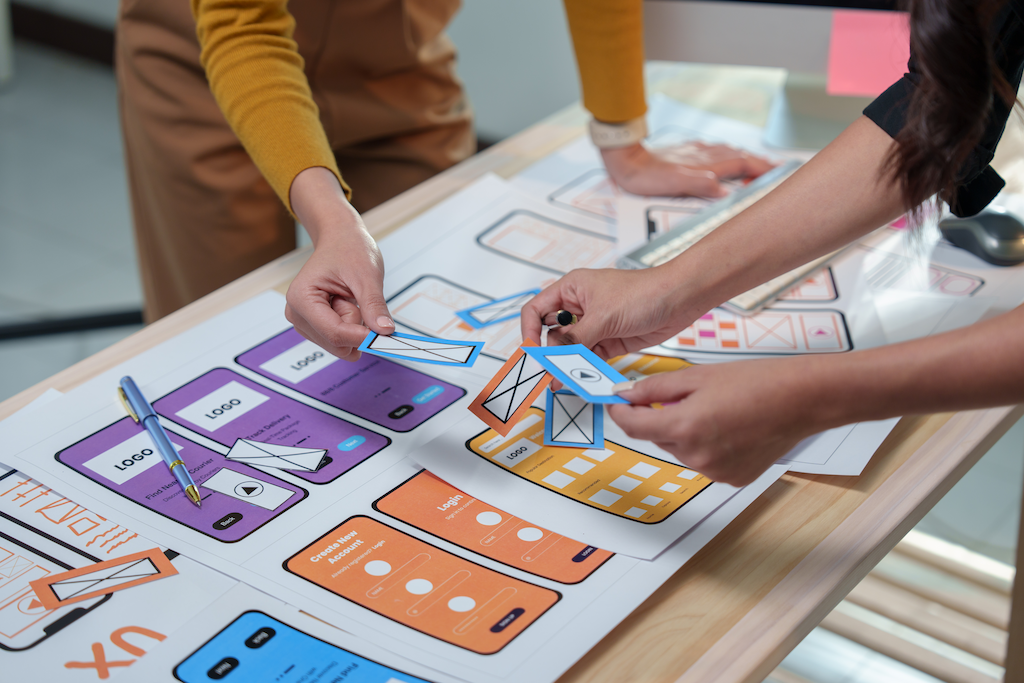UI/UX design plays a vital role in the success of any digital product. Whether you’re a business owner, a designer, or a developer, understanding the importance of UI/UX can make all the difference in how users experience your product. It’s not just about making something look good—it’s about creating a seamless journey that captivates and retains users.
In this article, we’ll dive into the importance of UI/UX design, its core elements, and how it can unlock growth and engagement for your digital products.

What is UI and UX Design?
UI (User Interface) and UX (User Experience) design shape how you interact with digital products, ensuring they are both visually appealing and easy to use. From the layout of a website to the way an app responds to your actions, every detail is carefully designed to create a seamless and engaging experience. Good design is not just about appearance—it’s about making interactions intuitive, efficient, and enjoyable.
When done well, UI and UX design work together to enhance functionality while maintaining a polished, professional look. A well-structured interface guides you effortlessly, while a thoughtfully designed experience ensures you can achieve your goals with ease. Whether navigating a website, using an application, or engaging with any digital platform, strong UI and UX design make technology more accessible, efficient, and user-friendly.

UI vs. UX Design: Breaking Down the Key Differences
While UI and UX design are closely related, knowing the difference between them is crucial for creating effective digital products. By understanding how they work together, designers can strike the right balance, ensuring that a product is not only visually appealing but also efficient.
To help clarify these distinctions, the table below outlines the key differences between UI and UX design across six important aspects.
| Aspect | (User Interface) | (User Experience) |
|---|---|---|
| Focus | Visual design and interactive elements like buttons, icons, and layout | The overall user journey, ensuring ease of use and satisfaction |
| Goal | Create an attractive, user-friendly interface | Ensure a smooth, efficient, and enjoyable experience |
| Elements | Buttons, typography, colors, and layouts | User research, wireframes, user flows, and testing |
| Process | Designing mockups, prototypes, and ensuring visual consistency | Research, wireframing, prototyping, and testing for usability |
| Outcome | Visually engaging and easy-to-use interface | Seamless, enjoyable, and efficient user experience |
| Tools Used | Sketch, Figma, Adobe XD | Figma, InVision, UserTesting |
Why UI/UX Design is Essential for a Seamless Experience
UI/UX design holds significant weight in determining the success of digital products by making sure they are not only user-friendly but also visually engaging. A thoughtfully crafted UI/UX ensures ease of navigation and aesthetic appeal, directly influencing user satisfaction. Here’s why:
1. Improves Usability for Effortless Navigation
A well-designed UX ensures that your users can navigate your site or app effortlessly. When the user flow is logical, and the interface is easy to navigate, users can easily find what they need without frustration. This seamless navigation leads to a higher level of user satisfaction, which is key for customer retention. In turn, your users spend more time on your platform and are more likely to return.
2. Enhances Visual Appeal for Comfort and Trust
UI design plays a critical role in creating an inviting and engaging environment for users. A sleek, visually appealing design not only grabs attention but also reassures users that your product is professional and trustworthy. If the design is cluttered or unattractive, users might feel overwhelmed or uneasy, which can push them away.
3. Boosts Engagement with Intuitive Interactions
When your digital product is easy to use and visually appealing, users are more likely to explore it further. They will feel confident navigating the interface, leading them to spend more time interacting with your features. The clearer and more well-structured the design, the more users will engage with your product, ultimately improving the likelihood of conversions (e.g., purchases, sign-ups).
4. Increases Conversion Rates with a Seamless Journey
A well-thought-out UI/UX design can directly impact your business’s success. When users are able to complete their desired actions—whether it’s making a purchase, signing up, or filling out a form—without friction, the likelihood of conversions increases. Seamless design keeps users engaged long enough to make decisions, and ultimately, take action.
5. Builds Trust and Credibility with Consistent Design
A consistent UI/UX across your digital product helps build trust with users. When they see that the design is polished, easy to navigate, and user-friendly, they’re more likely to feel confident in your product and your brand. Trust and credibility lead to loyal customers and long-term business success.
6. Drives Retention with a Satisfying Experience
Customer retention is another critical benefit of great UI/UX design. When users have a smooth, enjoyable experience, they are more likely to return. The more positive experiences they have with your product, the more likely they are to become repeat customers. Focus on delivering a user-centric experience, and you’ll build a loyal customer base.

Core Elements That Shape Exceptional UI/UX Design
The components of UI/UX design are numerous, but a few key elements make the difference between good and exceptional design:
1. User Research
Understanding your users is the foundation of good UX design. By conducting user research, you gain insights into their needs, pain points, and behaviors. This research helps you design solutions that meet users’ expectations and solve their problems effectively.
2. User Flow
User flow refers to the path users take to complete tasks in your digital product. A clear and streamlined user flow ensures that users can achieve their goals without confusion. Designing an effective user flow can reduce bounce rates and improve overall satisfaction.
3. Visual Design
The visual design of your product has a huge impact on how users perceive it. Color schemes, typography, icons, and images all play a role in creating a visually appealing interface. These visual elements should align with your brand identity and provide a pleasant and cohesive experience for users.
4. Interaction Design
Interaction design focuses on how users interact with your digital product. It includes elements like buttons, links, and forms. A good interaction design ensures that these elements are intuitive, easy to use, and responsive.
5. Consistency
Consistency across your design ensures that users can navigate your product without confusion. This means using consistent colors, fonts, and layouts throughout the product. It also applies to maintaining similar interactions for similar actions across different pages or screens.
Top Strategies for Crafting an Exceptional UI/UX Design
To truly elevate your design, here are some strategies you can apply:
1. Conduct thorough user research to guide design decisions
Start by gathering qualitative and quantitative data through surveys, interviews, and usability testing. Analyze user behavior to identify pain points and preferences, then use these insights to inform design choices.
2. Structure navigation for clarity and ease of use
Organize content logically, use familiar labels, and limit menu options to avoid overwhelming users. Implement breadcrumb trails, search functionality, and consistent navigation patterns across all pages.
3. Optimize loading speed through efficient performance techniques
Compress images, enable lazy loading, and minimize CSS and JavaScript files. Use caching and a content delivery network (CDN) to reduce load times and improve responsiveness.
4. Utilize white space to enhance readability and visual flow
Avoid clutter by spacing out elements strategically. Maintain proper margins, line spacing, and section breaks to create a clean, balanced layout that guides users naturally through the content.
5. Incorporate microinteractions to improve user engagement
Add small animations, hover effects, and feedback cues to enhance usability. Ensure interactive elements like buttons and forms provide immediate responses, reinforcing a smooth user experience.
6. Ensure a responsive design that adapts to all devices
Use flexible grids, scalable images, and media queries to create layouts that adjust seamlessly across different screen sizes. Test responsiveness regularly to maintain usability on desktops, tablets, and mobile devices.
7. Continuously test, analyze, and refine for ongoing improvement
Conduct A/B testing, collect user feedback, and analyze heatmaps to identify usability issues. Regularly update and iterate on the design based on data-driven insights.

Unlock Growth and Engagement with Powerful UI/UX Solutions
UI/UX design plays a pivotal role in how users engage with your digital product, directly impacting satisfaction and retention. A focus on well-designed interfaces and visual appeal not only enhances aesthetics but also creates a seamless user experience that drives growth and business success. Whether it’s a website, mobile app, or digital tool, prioritizing UI/UX will ensure your product resonates with users.
Outsource Philippines can help you elevate your UI/UX strategy with expert web design solutions. Our team focuses on user-centered design to enhance engagement and streamline interactions. By outsourcing, you ensure high-quality results while freeing up your internal resources. Let our expert team boost your online presence and drive lasting growth.







